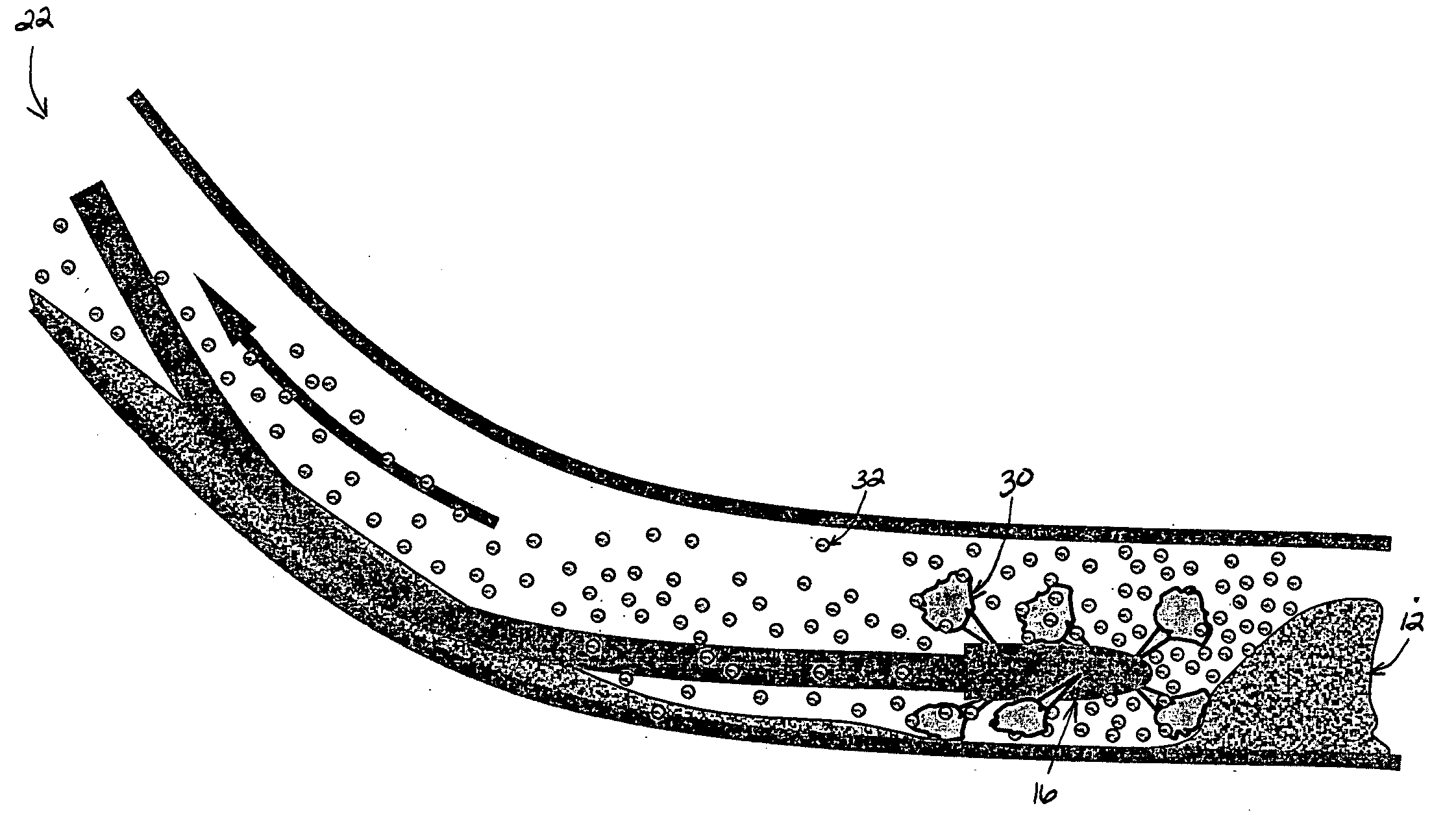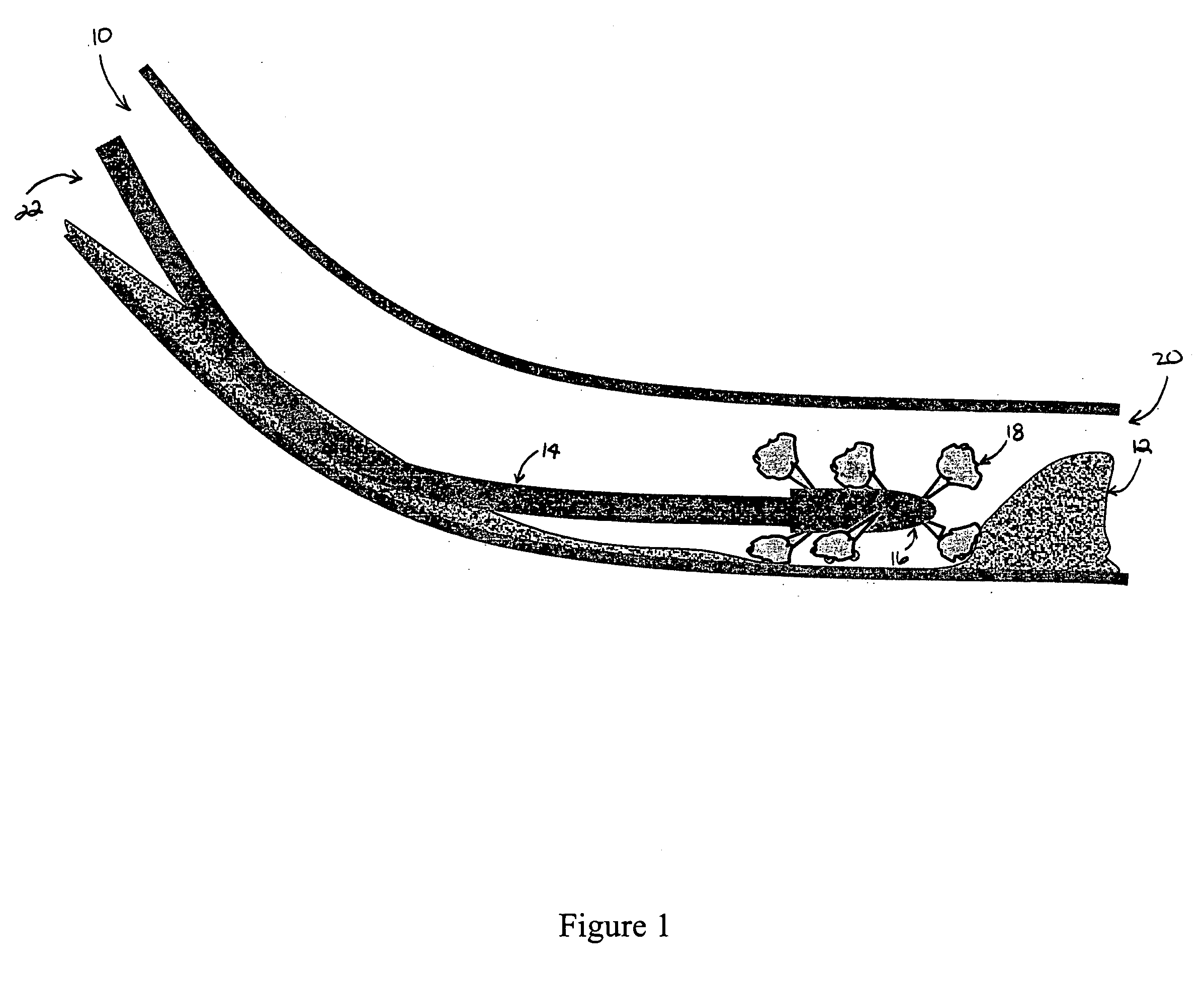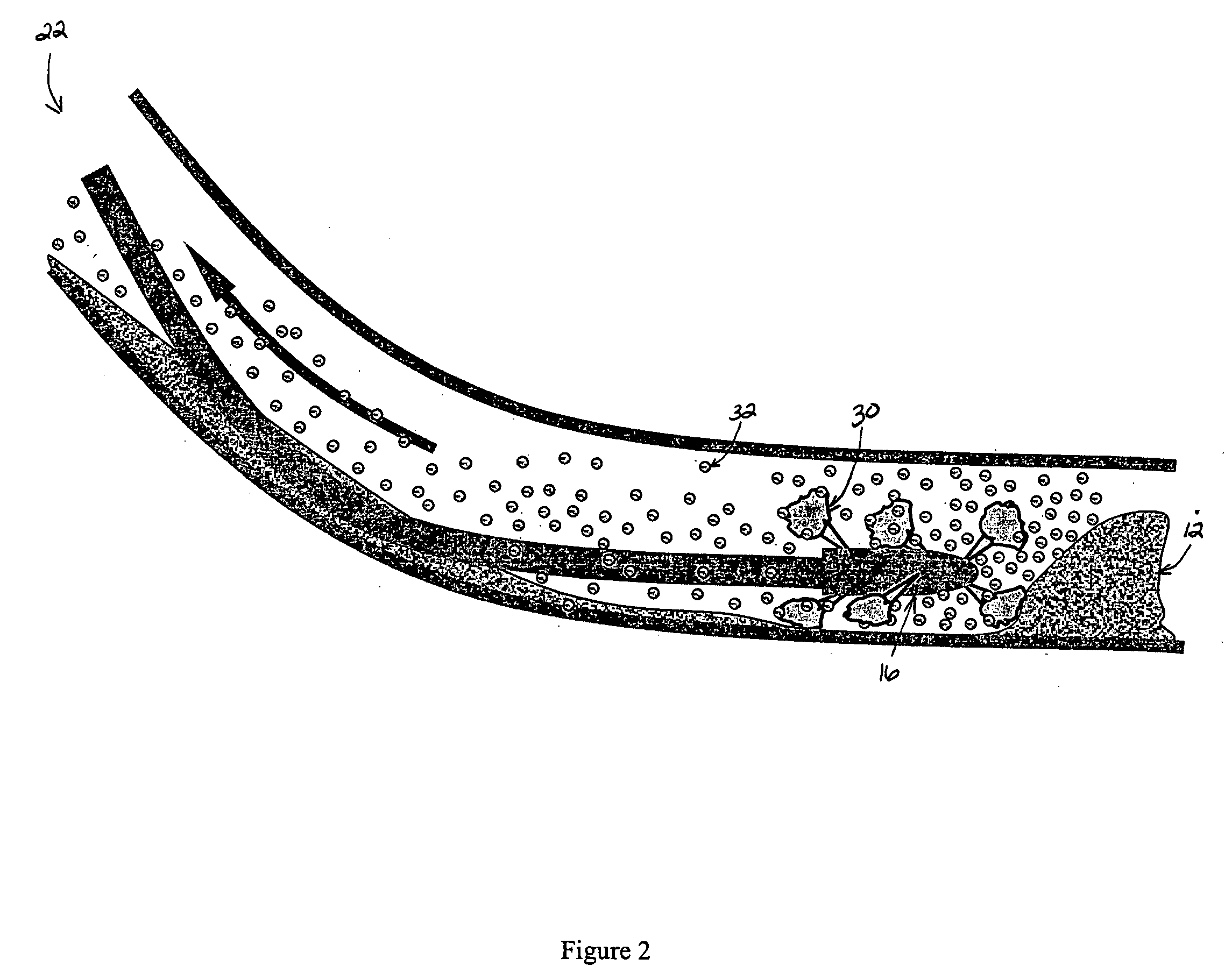Gel capsules for solids entrainment
- Summary
- Abstract
- Description
- Claims
- Application Information
AI Technical Summary
Benefits of technology
Problems solved by technology
Method used
Image
Examples
example 1
[0023] A first, biopolymer solution or fluid was prepared comprising 2% (w / w) of iota carrageenan in water. Ten gallons of the fluid was pumped into the annular space of a simulated wellbore. The annular space also contained approximately one gallon of sand prior to placement of the biopolymer fluid. The sand was positioned to create a sand bed.
[0024] A second, viscosifying solution or fluid was prepared comprising 2% KCl in water. This viscosifying fluid was pumped through the coiled tubing at 10 gpm. The nozzle was moved downhole through the carrageenan solution and sand bed. This treatment resulted in the formation of gel balls or capsules containing sand from the sand bed.
example 2
[0025] A first, biopolymer solution or fluid was prepared comprising 50 gallons of 0.45% (w / w) guar solution was adjusted to pH 10 with 40 gm sodium hydroxide. The testing apparatus was filled with this solution. One gallon of sand was introduced into the annulus. With the nozzle placed approximately 6 ft from the sand bed, circulation was established at 10 gpm. Flow was switched to a 20 gallon tank containing a second, viscosifying solution or fluid comprising 5.2 g / gal of borate in water. An approximately 50 / 50 mix was achieved with the guar solution by traversing the sand bed in 6 seconds when flow was switched back to the guar solution. Again, evidence of gel formation was observed with sand trapped in the gel network.
example 3
[0026] A first, biopolymer solution or fluid was prepared comprising 50 gallons of a 0.3% konjacmannan solution. In a separate tank 25 gallons of 0.5% xanthan solution at pH 10 was prepared. The experimental procedure described in Example 2 was repeated, using the 50 gallon solution to fill the system. Results showed the formation of gel capsules containing entrained sang in the gel.
PUM
 Login to View More
Login to View More Abstract
Description
Claims
Application Information
 Login to View More
Login to View More - R&D
- Intellectual Property
- Life Sciences
- Materials
- Tech Scout
- Unparalleled Data Quality
- Higher Quality Content
- 60% Fewer Hallucinations
Browse by: Latest US Patents, China's latest patents, Technical Efficacy Thesaurus, Application Domain, Technology Topic, Popular Technical Reports.
© 2025 PatSnap. All rights reserved.Legal|Privacy policy|Modern Slavery Act Transparency Statement|Sitemap|About US| Contact US: help@patsnap.com



